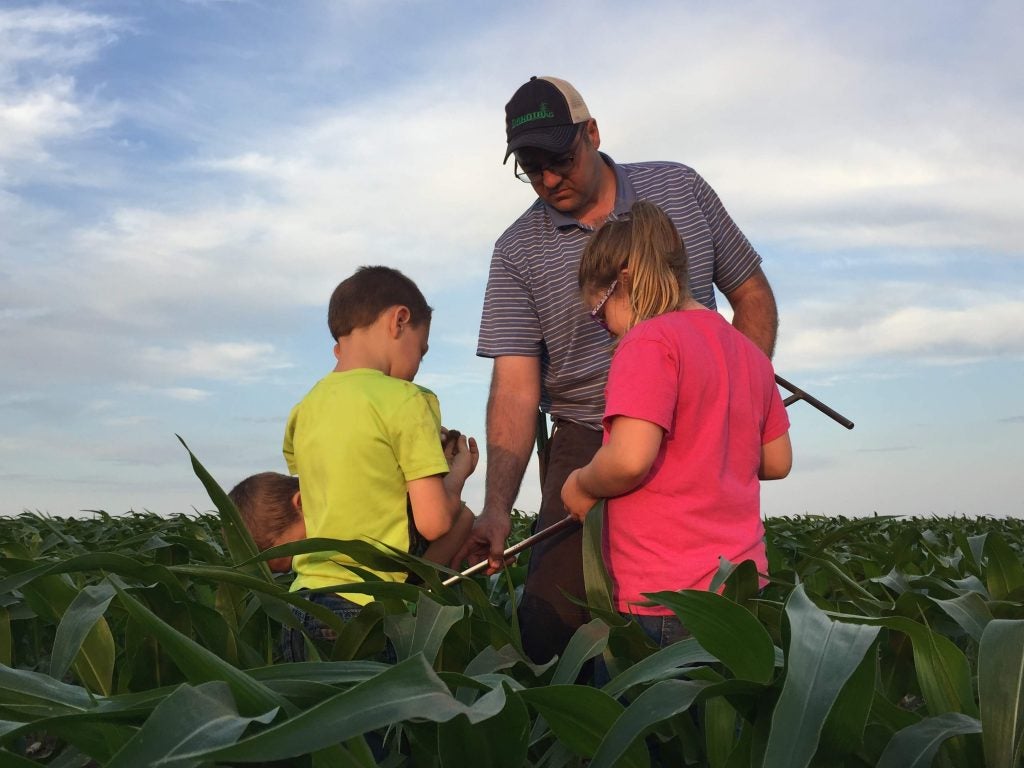By Keith Alverson, a sixth-generation grain farmer in Chester, South Dakota and an adviser to Environmental Defense Fund.
It goes without saying that 2019 was an extremely difficult year for farmers like me. Unprecedented amounts of snow and rain led to 3.9 million acres in our state that couldn’t be planted.
Lake County, South Dakota, were I live, received 32% more rainfall than in a normal year. For most farmers in the area, this record-setting wet spring meant that they could only plant about 50% of planned corn acres and 80% of planned soybean acres.
I feel for them. No farmer wants to have a season like that, but when we do, crop insurance provides critical support to help farm finances withstand tough times.
Thankfully, Congress is taking timely action to strengthen federal crop insurance by promoting soil health practices that reduce risk from extreme and variable weather. Here’s why this matters so much to farmers like me who are heading into another wet spring.
Soil health investments pay off
I was fortunate enough to be able to plant almost all of my fields last year, a fact that I attribute to good soil health and a bit of luck. Years ago, my dad and uncle started soil health practices that I’ve continued and have been pleased to see pay off. How?
Improved soil structure from minimum-till expanded the windows we had to plant and care for crops, which was critical after so much rain.
Also, increased organic matter – from tillage reductions, high biomass crops and cover crops, or plants that keep the soil covered when a cash crop isn’t growing – reduced soil erosion and helped our soils hold more moisture, both in times when there was too much and too little water.
Financial incentives to reduce risk
As farmers navigate increased uncertainty, more of them can realize the benefits of improved soil structure if they have the right incentives and financial support to adopt soil health practices.
The bipartisan Cover Crop Flexibility Act, which Sens. John Thune (R-SD) and Debbie Stabenow (D-MI) recently introduced, aims to do just that.
Currently, planting cover crops can lower the crop insurance payments farmers receive, which keeps many farmers from adopting this soil health practice in fields that are too wet to plant with cash crops. This bill removes that barrier and adds further incentives and flexibility such as allowing farmers to use cover crops for livestock grazing or feeding.
It’s a significant change, because planting cover crops can help farmers retain some economic value in a tough weather year instead of taking a total loss on the season.
Ultimately, these policy changes will reward farmers for adopting a proven conservation practice that reduces risk from the many factors outside of our control.
Farmers know that healthy soil directly impacts our long-term profitability. We want to invest in it, but sometimes the upfront financial costs get in the way of switching to conservation practices, even when those practices deliver longer-term returns on investment.
Smart policies, like these updates to federal crop insurance, can play a big role in helping farmers overcome adoption hurdles. A strong crop insurance system is vital for healthy rural and farm economies, especially in a period of growing uncertainty. Share on X
Gearing up for the 2020 planting season
I recently joined the Soil Health Partnership to help find the best mix of cover crops for my crop rotation. Though I’ve tried cover crops in the past, conservation efforts are all about continuous experimentation and improvement.
This bill gives me more certainty that critical risk protection programs will support farmers like me as we refine our soil health efforts.
A strong crop insurance system is vital for healthy rural and farm economies, especially in a period of growing uncertainty. By incentivizing farmers to use practices that reduce long-term risk, we can ensure that this safety net and America’s farms stay strong and resilient for generations to come.










